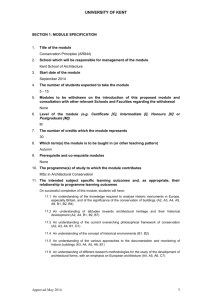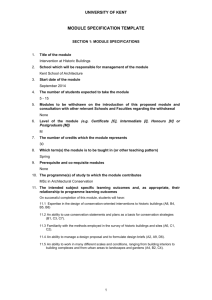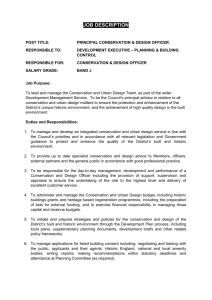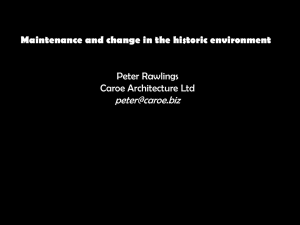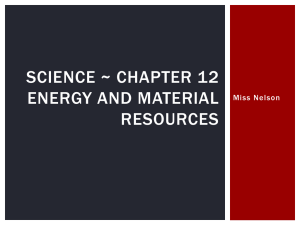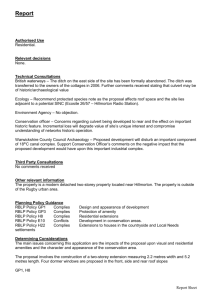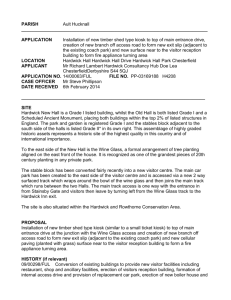Learning Outcome - University of Kent
advertisement
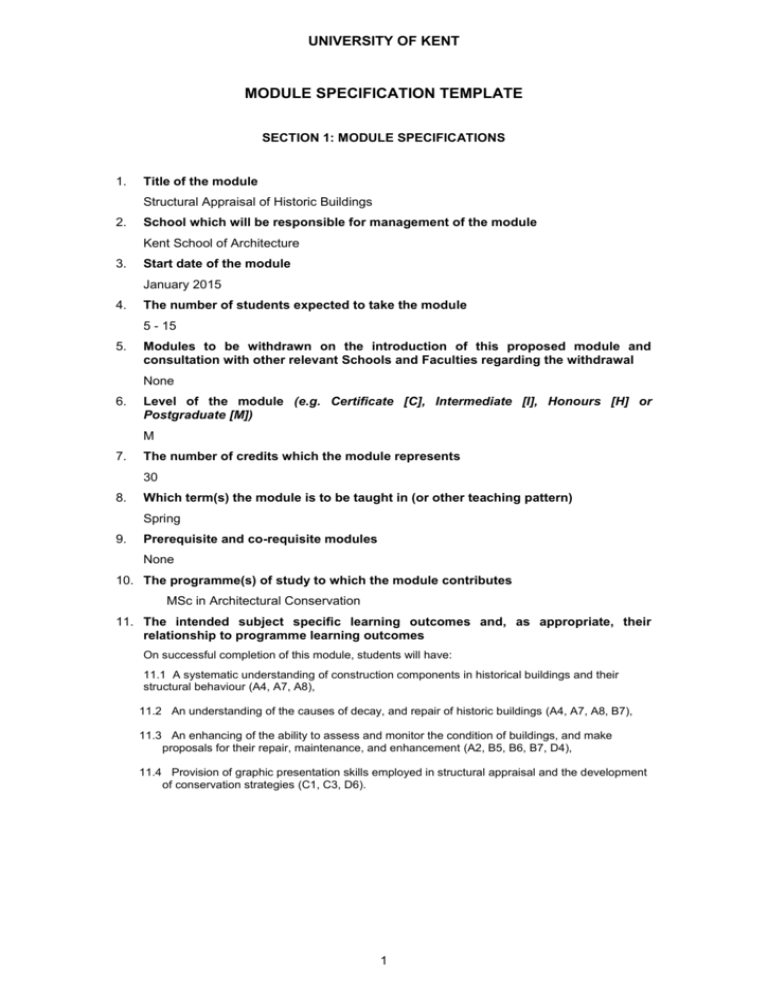
UNIVERSITY OF KENT MODULE SPECIFICATION TEMPLATE SECTION 1: MODULE SPECIFICATIONS 1. Title of the module Structural Appraisal of Historic Buildings 2. School which will be responsible for management of the module Kent School of Architecture 3. Start date of the module January 2015 4. The number of students expected to take the module 5 - 15 5. Modules to be withdrawn on the introduction of this proposed module and consultation with other relevant Schools and Faculties regarding the withdrawal None 6. Level of the module (e.g. Certificate [C], Intermediate [I], Honours [H] or Postgraduate [M]) M 7. The number of credits which the module represents 30 8. Which term(s) the module is to be taught in (or other teaching pattern) Spring 9. Prerequisite and co-requisite modules None 10. The programme(s) of study to which the module contributes MSc in Architectural Conservation 11. The intended subject specific learning outcomes and, as appropriate, their relationship to programme learning outcomes On successful completion of this module, students will have: 11.1 A systematic understanding of construction components in historical buildings and their structural behaviour (A4, A7, A8), 11.2 An understanding of the causes of decay, and repair of historic buildings (A4, A7, A8, B7), 11.3 An enhancing of the ability to assess and monitor the condition of buildings, and make proposals for their repair, maintenance, and enhancement (A2, B5, B6, B7, D4), 11.4 Provision of graphic presentation skills employed in structural appraisal and the development of conservation strategies (C1, C3, D6). 1 UNIVERSITY OF KENT 12. The intended generic learning outcomes and, as appropriate, their relationship to programme learning outcomes On successful completion of this module, students will have: 12.1 Ability to critically apply theories, research and analysis in order to understand the structural behaviour of a building (A4, A7, A8, B7, D4) 12.2 Ability to investigate and identify the extent and the cause of construction materials’ decay, by analysing a wide range of historical documentation and interpreting data from laboratories (A4, A7, A8) 12.3 Ability to develop a structural intervention strategy using appropriate presentation and communication skills (B5, B6, C1, C3, D6) 13. A synopsis of the curriculum This module explores the structural behaviour of buildings, and examines their response to environmental phenomena. It helps the students to analyse the causes and patterns of damage in a wide range of structures and cultivates a critical understanding of the techniques employed in the repair and strengthening of historic buildings. A combination of lectures and laboratory analysis will help the students to develop an advanced understanding of the properties of building materials and their decay. The module will include lectures on materials such as stone, brick, mortar, timber, iron and concrete. Three of these lectures will be delivered by the conservators of Canterbury cathedral at the Cathedral’s conservation workshop. This will constitute an opportunity to observe the methods employed in the conservation of Canterbury cathedral, examining the practical application of a wide range of preservation techniques. The course’s assignment, a structural report on a historic structure in Kent will provide students with an opportunity to test the skills and knowledge gained in the lectures, articulating their findings using the relevant presentation skills. 14. Indicative Reading List Ashurst, J. & N., Practical Building Conservation (Vols. 1-5), English Heritage Technical Handbooks, 1988 Ayres, James, Building the Georgian City, Yale, 1998 Beckmann, Paul, Structural Aspects of Building Conservation, MCGraw Hill, 1995 Carbonara, Giovanni, Atlante del restauro, UTET, 2005, ISBN: 9788802061207 Croci, G., The Conservation and Structural Restoration of Architectural Heritage, Computational Mechanics, Southampton, 1998 Forsyth, Michael, Structures and Construction in Historic Building Conservation: Structures and Construction, Wiley-Blackwell, 2007, ISBN-13: 978-1405111713 Gorgon, J. E., Structures: or why things don’t fall down, Penguin, 1991 Heyman, Jacques, The Stone Skeleton: Structural Engineering of Masonry Architecture, Cambridge University Press, 1997, ISBN13: 9780521629638 Mainstone, R., Developments in Structural Form, Allen Lane, 1975 Robson, R, Structural Appraisal of Historic Buildings, Gower, 1991 Theodossopoulos, Dimitris, Structural Design in Building Conservation, Taylor & Francis Ltd Routledge, 2012, ISBN-13: 978-0415479462 2 UNIVERSITY OF KENT 15. Learning and Teaching Methods, including the nature and number of contact hours and the total study hours which will be expected of students, and how these relate to achievement of the intended learning outcomes Learning and teaching Methods Achievement of Los Contact Hours Per student Directed Learning Lectures 12 hours Study Hours How this relates to the module Learning Outcomes 11.1, 11.2, Lectures Part Directed learning Required readings on lecture topics Students will be instructed about structural principles and materials’ decay during lectures in order to give them the proper critical tools to investigate the technical feature of historical buildings. The students will prepare a structural report on a historic building. The choice of building will be agreed between student and tutor. The subject is presented to the class as a seminar. Lecture topic seminar presentations and discussion 12 hours Laboratory use 6 hours Statement seminar presentations 6 hours TOTAL: 36 hours Required readings 44 hours and on field 44 hours Research and prepare seminar topics about case study 88 hours Research, analysis and prepare illustrated structural report 88 hours 11.3, 12.1, 12.2 12.1,12.2, 12.3 11.4, 12.1, 12.2, 12.3 Individual learning Research and reading on seminar topics TOTAL TOTAL: 264 hours 300 hours 16. Assessment methods and how these relate to testing achievement of the intended learning outcomes Assessment Method Learning Outcome Students will be able to: - Structural Report for a historic building in Kent. (100%) 11.1, 11.2, 11.3, 11.4, 12.1, 12.2, 12.3 17. Implications for learning resources, including staff, library, IT and space Staff and resources are available to teach this Module at the University’s Canterbury campus. The students will have access to laser scanning and survey equipment already owned by the school. They will also benefit from the use of the laboratory of the School of Physical Sciences, where they can carry out materials analysis. A suitable budget has been devoted to the task of expanding Templeman Library’s collection of books on historic structures and their conservation. Finally, a collaboration with Canterbury cathedral will offer students the opportunity to visit this major monument and share some of the expertise generated during its recent conservation. 3 UNIVERSITY OF KENT 18. The School recognises and has embedded the expectations of current disability equality legislation, and supports students with a declared disability or special educational need in its teaching. Within this module we will make reasonable adjustments wherever necessary, including additional or substitute materials, teaching modes or assessment methods for students who have declared and discussed their learning support needs. Arrangements for students with declared disabilities will be made on an individual basis, in consultation with the University’s disability/dyslexia support service, and specialist support will be provided where needed. 19. Campus(es) where module will be delivered Canterbury; Canterbury Cathedral Workshop (Broadoak site, Canterbury, CT2 0PR) If the module is part of a programme in a Partner College or Validated Institution, please complete the following: 20. Partner College/Validated Institution 21. University School (for cognate programmes) or Faculty (for non-cognate programmes) responsible for the programme Not applicable SECTION 2: MODULE IS PART OF A PROGRAMME OF STUDY IN A UNIVERSITY SCHOOL Statement by the School Director of Learning and Teaching/School Director of Graduate Studies (as appropriate): "I confirm I have been consulted on the above module proposal and have given advice on the correct procedures and required content of module proposals" Director of Graduate Studies Gordana Fontana-Giusti Print Name Statement by the Head of School: "I confirm that the School has approved the introduction of the module and, where the module is proposed by School staff, will be responsible for its resourcing" Don Gray .............................................. ................................................................. Date Head of School Don Gray ……………………………………………………. Print Name Module Specification Template Last updated November 2011 4
